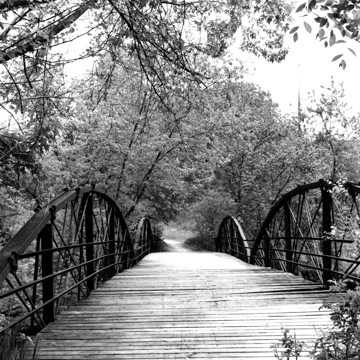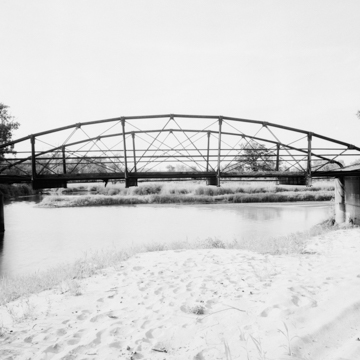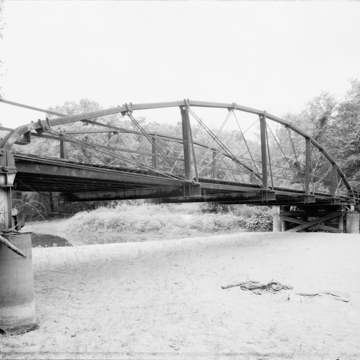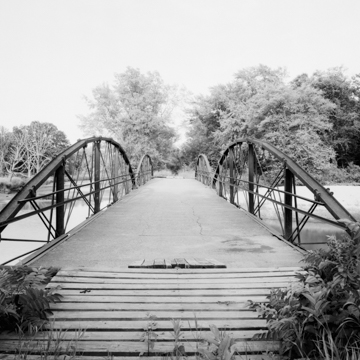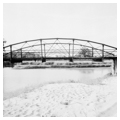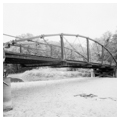Only seven bowstring-arch bridges still stand in Wisconsin. Five of them are along the 3.7-mile hiking McGilvray Trail. Each of these pedestrian bridges has one or two spans; three have timber decks, and the other two have concrete decks. All are remarkably graceful, their semi-elliptical steel chords looping over heavy vertical posts, interlaced with slender diagonal braces. The ends of each top chord curve inward as they reach the deck.
Charles Horton patented the bowstring arch in 1897 but later signed his rights over to the La Crosse Bridge and Steel Company, which built these bridges. Because it used relatively few parts, Horton’s design allowed for quick assembly at a low cost. However, a bowstring placed all of the vertical members and the bottom chord in tension, so that gravity pulled and stretched all but the top chord. To add rigidity, the builders ran double or triple rows of angle irons, forming railings, along each span. Bottom lateral bracing lent still more support to some of the bridges. Since Horton believed that rivet holes needlessly weakened a bridge, these bowstrings used devices like hook clips, sleeves, hangers, and socket supports to secure the various members.
This road crossing the marshy bottoms and twisting channels of the Black River became a major route between La Crosse and Trempealeau County, replacing the ferry that Scottish-born Alex McGilvray had established in 1861. Because of frequent flooding, however, the road was superseded by U.S. 53/WI 35, built on higher ground to the east. Today the former McGilvray Road is a popular trail through the Van Loon Wildlife Area.






